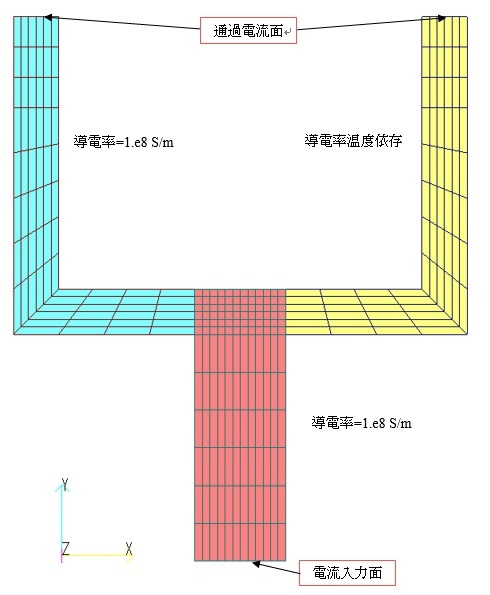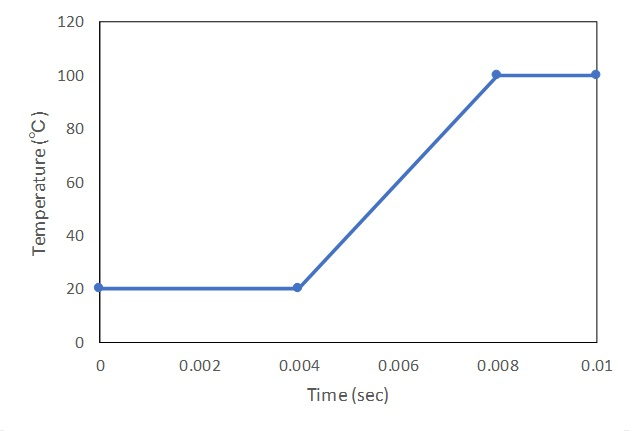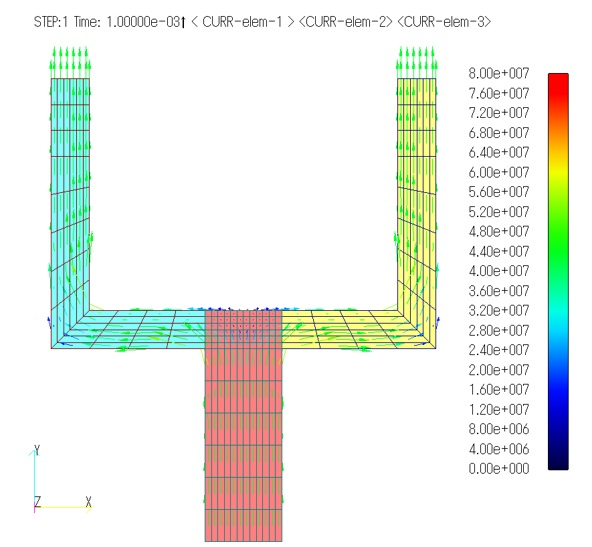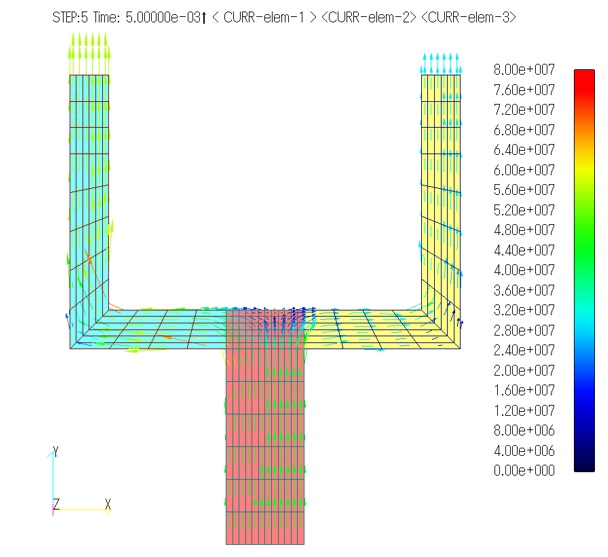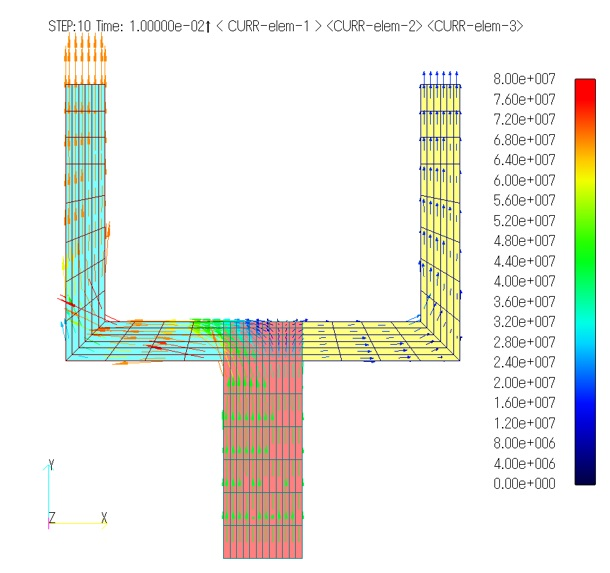Analysis using temperature-dependent conductivity
- TOP >
- Analysis Examples by Functions (List) >
- Analysis using temperature-dependent conductivity
Summary
Conductivity is known to be temperature-dependent, and we have added the new function to analyze using temperature-dependent conductivity. Eddy current analysis can be performed by setting the conductivity-temperature curve and the temperature of element or property.
Explanation
his function is illustrated using a model simulating a bifurcated conductor as shown in Fig. 1, which was used in the "DC Current Field Analysis of Bulk Conductors". The two bifurcations have the same geometry, but the conductivity at one side is smaller than the other, assuming that the temperature rises on that side. Fig. 2 shows the temperature vs. conductivity curve used in the analysis. Please note that the temperature rise is assumed to be very short, but this is for sample calculations.
Fig.3 shows the current distribution at times 0.001s, 0.005s, and 0.01s. You can see that the left branch is gradually approaching a steady state because the conductivity does not change, while the right branch, on the contrary, shows a decrease in current due to the change in conductivity. The temperature-dependent conductivity analysis function uses interpolation from the conductivity-temperature curve. The temperature can be specified on an element-by-element or property-by-property basis, and the temperature at each time must be set in a separate file "temperature.dat".
Briefly, we have introduced an analysis that takes into account the temperature dependence of conductivity. This function can be used for transient analysis of bulk conductors using SUFCUR. It can also be used for "steady-state current field analysis" (Handbook "2. Types of Analysis"). Basically, conductivity-temperature curves are used, but may also be used when conductivity depends on factors other than temperature.
The rest of this page is for members only.
Analysis Examples by Functions
DC field current analysis
©2020 Science Solutions International Laboratory, Inc.
All Rights reserved.


